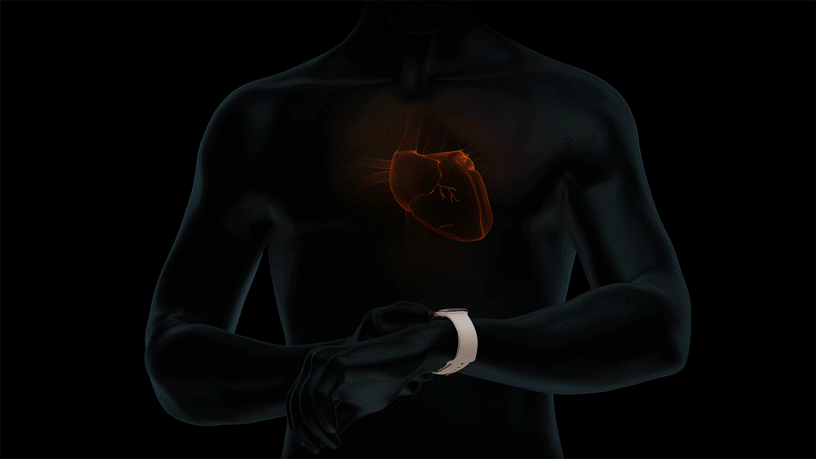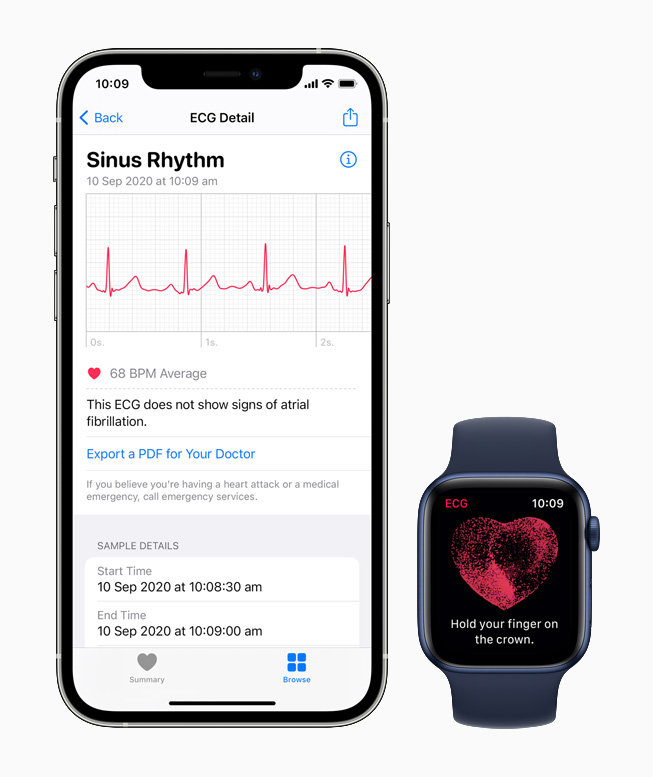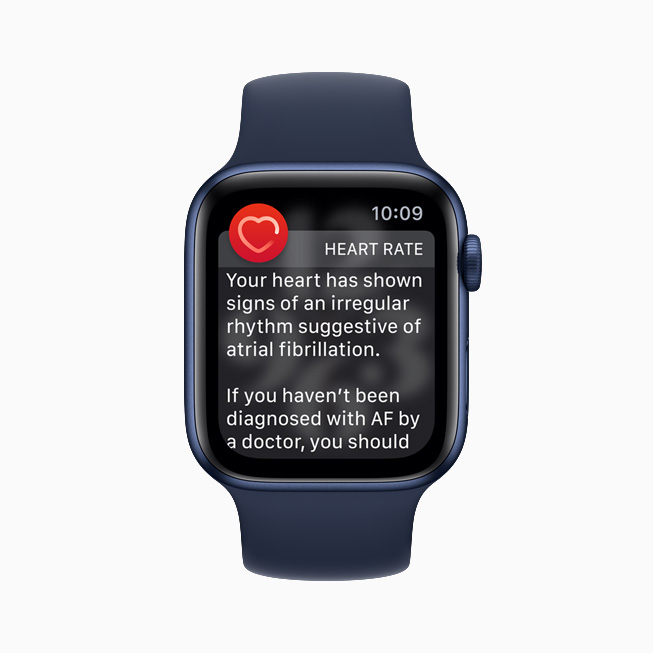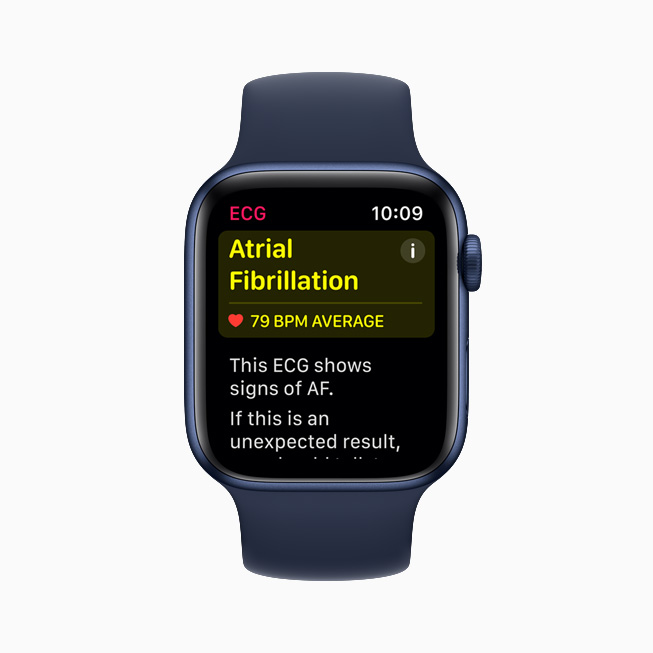UPDATE
26 May 2021
ECG app and irregular rhythm notification now available on Apple Watch
The ECG app on Apple Watch Series 4, 5, and 6 is now available in Australia with the latest iOS and watchOS software updates. The feature marks the first direct-to-consumer product that enables customers to take an electrocardiogram right from their wrist, capturing heart rhythm the moment they want to know more about their heart health and share this critical information with their doctors. The irregular rhythm notification feature on Apple Watch Series 3 and later will also occasionally check heart rhythms in the background and send a notification if an irregular heart rhythm that appears to be atrial fibrillation (AFib) is identified. The ECG app and the irregular rhythm notification feature were successfully included in the Australian Register of Therapeutic Goods (ARTG) in Australia as Class IIa medical devices.
The ECG app1 and irregular rhythm notification feature2 help users identify signs of AFib, the most common form of irregular heart rhythm. When left untreated, AFib can lead to stroke, the second most common cause of death around the world.
“Apple Watch has helped so many people around the world, and we are humbled that it has become such an important part of our customers’ lives,” said Jeff Williams, Apple’s chief operating officer. “With the release of these heart features, Apple Watch takes the next step in empowering people with more information about their health.”
“We are confident in the ability of these features to help users have more informed conversations with their physicians,” said Sumbul Desai, MD, Apple’s vice president of Health. “With the ECG app and irregular rhythm notification feature, customers will be able to better understand aspects of their heart health in a more meaningful way.”
ECG App
Electrodes built into the back crystal and Digital Crown on Apple Watch Series 4, 5, and 6 work together with the ECG app to enable customers to take an ECG similar to a single-lead reading. To take an ECG recording at any time, users launch the ECG app on Apple Watch Series 4, 5, and 6, and hold their finger on the Digital Crown. As the user touches the Digital Crown, the circuit is completed and electrical signals across their heart are measured. After 30 seconds, the heart rhythm is classified as either AFib, AFib with high heart rate, sinus rhythm, low or high heart rate, inconclusive, or poor recording. All recordings, their associated classifications, and any noted symptoms are stored securely in the Health app on iPhone. Users can share a PDF of the results with doctors.
Irregular Rhythm Notification
Using the optical heart sensor in Apple Watch Series 3 and later, the irregular rhythm notification feature will occasionally check the user’s heart rhythm in the background for signs of AFib and alerts the user with a notification if an irregular rhythm is detected on five rhythm checks over a minimum of 65 minutes.
“Data collected by Apple Watch could be used to help diagnose atrial fibrillation early,” said Bill Stavreski, General Manager for Heart Health and Research at the Australian Heart Foundation. “While AFib often leads to a poorer quality of life, many people have no symptoms or they might ignore occasional symptoms. This means the problem might not be found until serious consequences, such as a stroke, occur, so early diagnosis can lead to a better outcome. The findings from this technology should always be discussed with a doctor, who can interpret the results in the context of a person’s overall health.”
The ability of the ECG app to accurately classify an ECG recording into AFib and sinus rhythm was validated in a clinical trial of around 600 participants. Rhythm classification from a standard 12-lead ECG by a cardiologist was compared to the rhythm classification of a simultaneously collected recording from the ECG app. The study found the ECG app on Apple Watch demonstrated 99.3 per cent specificity in classifying sinus rhythm and 98.5 per cent sensitivity in classifying AFib for the classifiable recordings. In the study, 87.8 per cent of recordings could be classified by the ECG app.
The irregular rhythm notification feature was studied in the Apple Heart Study. With over 400,000 participants, the Apple Heart Study was the largest screening study on atrial fibrillation ever conducted, also making it one of the largest cardiovascular trials to date.
To enable these new heart features, customers proceed through an onscreen setup that includes details about who can use these features, what the features can and cannot do, what results users may get, how to interpret those results, and clear instructions for what to do if users are feeling symptoms that require immediate medical attention.
Share article
Images of ECG app and Irregular Rhythm Notification Feature on Apple Watch
- Learn more about ECG app Instructions for Use (IFU). The ECG app is available on Apple Watch Series 4 and later (not including Apple Watch SE) in 70 countries and regions, and requires the latest version of iOS and watchOS. The app does not detect heart attack, blood clots, stroke, or other heart-related conditions including high blood pressure, congestive heart failure, high cholesterol, or other forms of arrhythmia. ECG is not intended for use by people under 22 years old. If any symptoms arise, users should contact their doctor.
- Learn more about irregular rhythm notification Instructions for Use (IFU). The irregular rhythm notification feature is available with the latest version of iOS and watchOS in 39 countries and regions, and with the latest version of iOS and watchOS on Apple Watch Series 3 and later in an additional 31 countries and regions. The feature does not detect heart attack, blood clots, stroke, or other heart-related conditions including high blood pressure, congestive heart failure, high cholesterol, or other forms of arrhythmia. It is not intended for use by people under 22 years old or those who have been previously diagnosed with atrial fibrillation. If any symptoms arise, users should contact their doctor.




